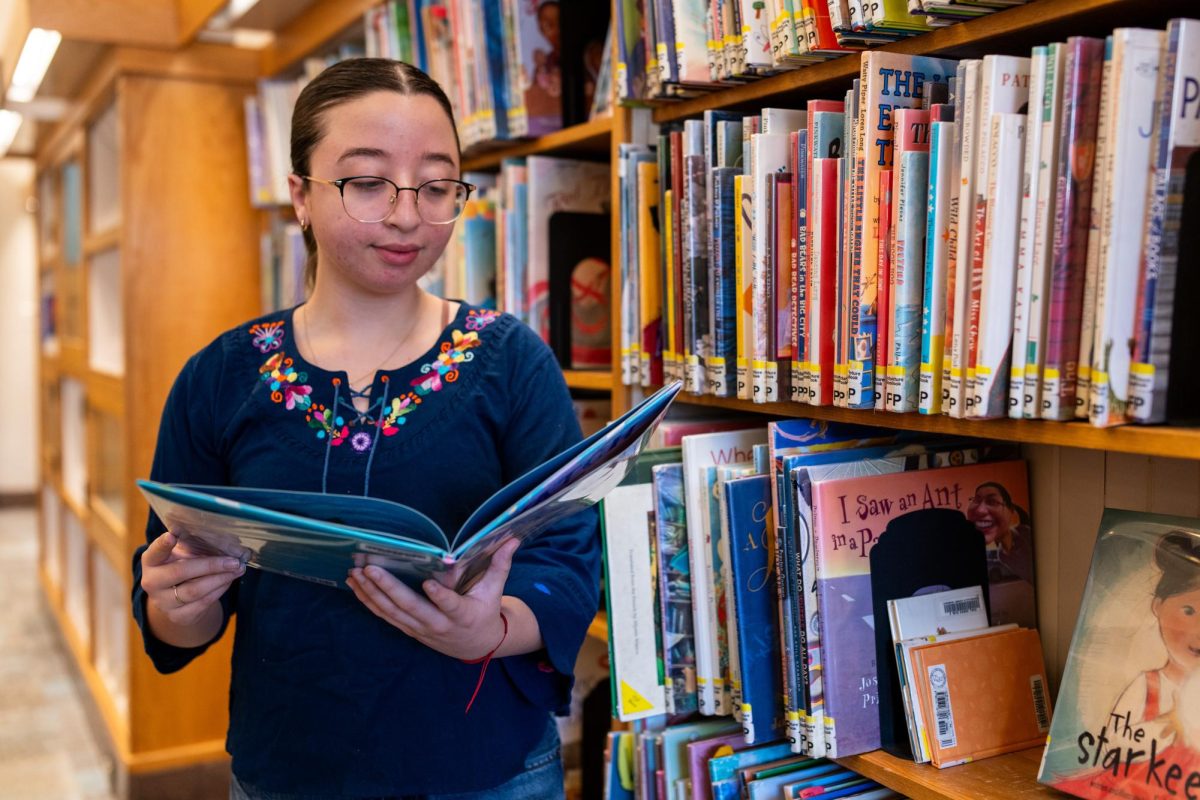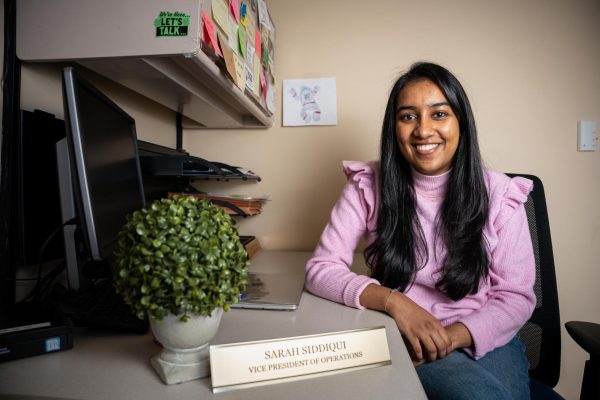Historical Oakland: local musicians once ruled venues
March 27, 2012
On a Saturday in October 1978, a crowd of Pitt students, steel mill workers and music… This is the first of two parts. See Part II.
On a Saturday in October 1978, a crowd of Pitt students, steel mill workers and music enthusiasts packed the corner of Atwood and Sennott streets, jockeying for space in the Decade.
After paying a $5 cover, those lucky enough to get in the entrance of the South Oakland bar were greeted with a wave of body heat, cigarette smoke and spilled Rolling Rock. Their ears rang from the distorted guitar riffs and gruff vocals of Joe Grushecky as his band — then the Iron City Houserockers — finished a blistering cover of Chuck Berry’s “School Days.”
Grushecky remembers the concert as monumental for the city, as well as Oakland. It was one night out of more than two decades of a thriving music scene in Oakland that brought in a diverse array artists, such as Bruce Springsteen and Black Flag.
“The f**king place was bonkers — there were lines around the block,” Grushecky said.
One bar patron at the Decade that evening was singer Meat Loaf.
“Meat Loaf was, literally and figuratively, the biggest rock star in America. We were on the same label at the time — Cleveland International Records. He came to see us play that night with all his handlers and managers, plus the record company people,” Grushecky said.
But the small Oakland bar could not accommodate the vast Meat Loaf entourage.
“The dressing room at the Decade was the freakin’ kitchen. It was maybe 8 feet wide, and Meat Loaf took up f**king half of it. There was probably 30 people crammed in there,” Grushecky said.
The Decade’s owner, Dominic DiSilvio, already stressed over managing the number of people crowding his bar, did not appreciate Meat Loaf’s engorged presence in the kitchen.
“So I walk into the kitchen and I saw this fat, very unkempt looking guy with stringy hair. So I said to Joe, ‘Who the hell is this?’ And he says, ‘This is Meat Loaf.’ I said, ‘I don’t give a sh*t if his name is fettuccine alfredo, I don’t want him in my kitchen,’” DiSilvio said.
Grushecky remembered the exchange led to Meat Loaf’s quick exit from the Decade.
“So he threw f**king Meat Loaf out of the kitchen of the Decade, and the record company people go storming out,” he said.
After some reflection, DiSilvio relented on his Meat Loaf bar ban.
“We come back the next Thursday for our regular gig, and there was Meat Loaf’s poster up on the wall. So it finally hit Dominic that maybe this guy was pretty big,” Grushecky said.
The Decade was one of three clubs composing what was referred by some as “Oakland’s Bermuda Triangle,” with locations the Electric Banana and Graffiti rounding out the group.
While Oakland featured other music venues — including the Syria Mosque, which housed mostly larger acts — the three clubs in the Triangle spanned a similar era and contained much smaller capacity crowds watching less firmly established artists. These three fostered local music in Oakland in a way that students and residents haven’t seen on such a large scale since the clubs’ closings.
Decade
DiSilvio opened the Decade in 1973 as a vintage restaurant in the style of the 1950s featuring a few local acts — the club’s name reflecting his preference for that decade and its music.
A Pittsburgh music promoter, Danny Kresge, convinced DiSilvio to start hosting national acts at the Decade. DiSilvio remained cautiously pessimistic about the prospect of crowd-drawing live music in his club.
“The first act we had was Maria Muldaur, she had a big hit at the time. And she canceled. So I thought, ‘Ugh, this isn’t going to work,’” he said.
But the first national artist who actually played at the Decade set a high bar for future bands and convinced DiSilvio that the new plan might have a chance.
“So the next act that we had was The Ramones. And obviously from there it just snowballed,” he said.
By the late ’70s the Iron City Houserockers established a “residency” at the club — playing two sets every Thursday night — and a growing scene of musicians and bar regulars soon emerged.
“Dominic had been looking for something like this to come along, but he had no idea about the music stuff. He was an older guy, his idea of rock ‘n’ roll was Dion and the Belmonts. But he loved us and supported us,” Grushecky said.
That support stretched to other musicians both locally and nationally as the club’s size grew.
“He started hiring everybody and he became like the Godfather of rock music. Pretty soon the Decade had seven nights a week of great live music,” Grushecky said.
Before gaining a huge national popularity, U2, The Police, The Pretenders and Stevie Ray Vaughan each played sets at the Decade during the late ’70s and ’80s.
DiSilvio personally convinced Stevie Ray Vaughan to play at his club after watching him perform live.
“Stevie Ray Vaughan was my favorite. I saw him at a jazz fest in New Orleans. I asked him if he would ever consider coming north. He says, ‘We’ve never been further north than Georgia.’ I paid them $500 and they came all the way north and played for $500,” he said.
Famous national artists like Aerosmith and Bon Jovi visited the Decade after playing shows at larger venues in the city because of its reputation.
Even Bruce Springsteen stopped in after playing at the Civic Arena when Grushecky took him on a tour of Oakland.
“I even brought Bruce Springsteen there one night during the height of the Born in the U.S.A. craziness. Bruce and I went over to the Original [Hot Dog Shop] and people swarmed him. But we went over to Decade and jammed with the band that was playing,” Grushecky said.
Jeff Usleman recalled seeing bands at the Oakland bar and catching the Springsteen cameo while attending Pitt in 1984.
“At the Decade, if you went a bit later, there wouldn’t be a cover charge. You could slide in and catch the band for the price of a couple cocktails. The one night I was there, Bruce Springsteen showed up and played a couple songs,” he said.
Grushecky tied the prominence of Pittsburgh bands at the Decade to its mystique and relevance.
“What made the Decade unique was what made the Stone Pony unique in Asbury Park — the local guys ruled. They were noted for being great music bars. They brought in outside acts all the time, but still the local guys were the top dogs. The Decade was legendary,” he said.
Electric Banana
If the Decade was Pittsburgh’s Stone Pony, then the Electric Banana was Pittsburgh’s CBGB.
The Electric Banana on Bigelow Boulevard was the smallest of the three Oakland clubs and featured an Andy Warhol-style banana sign above the entrance.
“The Decade was the antithesis of the Electric Banana. Those guys were the punk rockers and, for whatever reason, those guys did not like the Decade bands,” Grushecky said.
Johnny “Banana” Zarra owned the Banana with his wife Judy and decided in 1980 to make a radical transition in style after nearly 10 years as a go-go and then a disco club.
“Disco dropped dead. It was like turning the lights off. So we said, ‘What’s next?’ So we went rock ‘n’ roll,” Zarra said.
After booking a few cover bands, Zarra took a chance on a Pittsburgh punk group called Carsickness.
“I was walking past the bar one night, and there was these two weird-looking dudes all dressed in black. This guy, Karl Mullen, wanted to book his band [Carsickness]. So I was walking and talking at the same time, so I told Judy, ‘Give these guys a Monday or Tuesday night.’ And I kept walking.”
Zarra’s distracted booking of the band ended up transforming the club’s direction.
“Monday came, and by the end of the night there was 2 feet of beer cans on the floor. At the end of it I thought, ‘This punk isn’t bad,’” he said.
The Electric Banana became the go-to destination for these young punk bands.
“There wasn’t a club owner in the city who would book, like, punk rock, new wave. It was like the black sheep of rock ‘n’ roll,” Zarra said.
Nationally known punk and hardcore bands started filling the Banana’s headlining spots. Influential bands from the era such as Sonic Youth, the Minutemen, Operation Ivy and Black Flag all played shows there.
Black Flag’s former singer still keeps in touch with the Banana. “Henry Rollins still sends us Christmas cards,” Zarra said.
The Decade and Electric Banana bands rarely mixed, despite a shared hard-edged sound.
The bands in the Decade scene were older, more professionally skilled musicians who played in a raw R&B, rock-based style. The Electric Banana featured more college students and unrehearsed distortion.
Grushecky noted a rivalry between the two scenes sparked by these differences.
“We liked the punk attitude, but it seemed so restrictive. There was a bit of a competition between us, where the Electric Banana guys played the Banana and the Decade guys played the Decade. The Decade guys were definitely better musicians — not better artists, but players,” he said.
While playing in the band Mother McCree’s Garden, Russ Schneider performed at all three of the Oakland clubs in the mid-’90s and described the Electric Banana as a start-up venue.
“That was where everybody went to go play first. Because they would give a gig to anybody,” he said.
Graffiti
The third club in the “Triangle” was Graffiti, which opened on Baum Boulevard in North Oakland in 1982.
Graffiti’s rough, brick-covered, warehouse exterior contrasted with its spacious lounge interior. Schneider saw Graffiti as the most impressive of the Oakland clubs.
“My preference was Graffiti, by far. It was one of the better showcases that was in Pittsburgh. That was a really nice place. The Decade had the most history, but it was small,” he said.
As a showcase club, Graffiti sought acts from a wide spectrum of genres and young musicians, featuring national acts while still promoting local talent.
Graffiti featured concerts by national groups just prior to their commercial breakthroughs, including two of the more popular rock bands of the ’90s. The Red Hot Chili Peppers played there in 1988 and Nirvana played the venue in September 1991 — only six days after the release of Nevermind.
The club also showcased and rewarded Pittsburgh’s best talent in its own “Battle of the Bands” competition called the Rock Challenge.
“They always had the Rock Challenge, which was big. Rusted Root won it one year and that’s how they recorded their first album. Because the prize was a recording session at Audionation, which was a big recording studio at the time,” Schneider said.
By drawing the musical talent of Pittsburgh together, Graffiti helped bands meet and play with each other.
“That was the the best part. We played with, at the time, some really great bands — Blind Sight, The Goodies and Anti-Flag. We would go to each other’s shows, but we would also try and do shows with each other,” Schneider said.
Beyond just benefiting the musicians, Graffiti represented a dependable location in Oakland at which to hear talented, rising artists.
“You could go to Graffiti and you knew that you were going to hear a quality act. It was a place where you could just go and see who was playing this Saturday. It didn’t matter who was going. You knew you could hang out and enjoy the good live music,” Schneider said.







